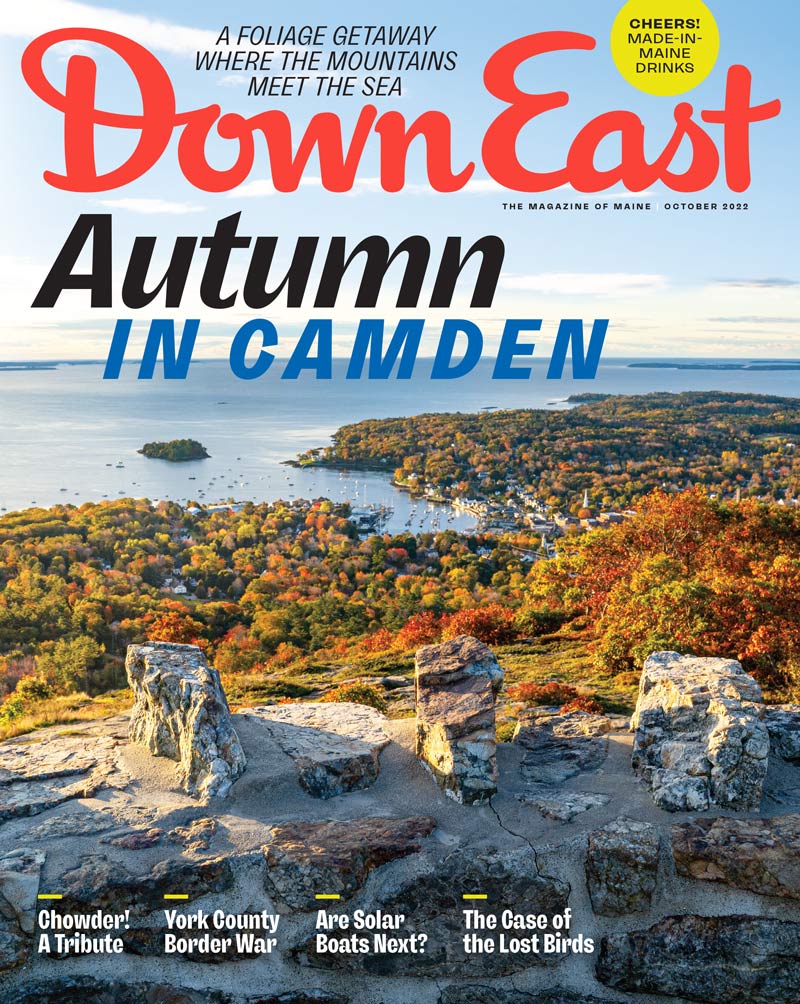By Peter Andrey Smith
Illustration by Kelsey Grass
From our October 2022 issue
Mostly, it’s easy to know whether one happens to be standing in Kittery or in York. There are, however, some places where the town line, as certain as it looks on a map, gets fuzzy on the ground. York’s Woodside Meadow Road, for instance, is a cul-de-sac that just barely extends into Kittery: at street level, it’s a little perplexing — thanks to a sharp bend in the road, thick woods, and a border not pegged to any obvious landmarks — why an address belongs to one town and not the other. Still, until recently, nobody seemed too bothered by the occasionally disorienting status quo.
In 2018, a company affiliated with York-based developer Duane Jellison, who grew up in Kittery, purchased a tract of former farmland along Route 1, not far from Woodside Meadow Road. The property straddles the town line. The following year, in 2019, a York official wrote Kittery’s town council asking for cooperation in redrawing the border in such a way that — by coincidence or not — would place more squarely in York the property where Jellison wants to build condos. Kittery officials have speculated that Jellison (who did not respond to our interview requests) prefers York’s zoning codes. “The town of Kittery appreciates that a change in border may hold some potential benefit for a single property owner,” town council member Judy Spiller wrote. “Reason, however, does not support or encourage the time, expense, or potential ill will that such a dubious legal challenge might create between friends and neighbors.”
York eventually sued Kittery. In court filings, York argued the existing border was “meandering” but ought to run straight, based on a description from 1652, when the Massachusetts Bay Colony annexed southern Maine. According to Kittery’s attorney, the proposed shift would affect 25 residential properties with a cumulative tax-assessed value of close to $8 million. Earlier this year, Kittery’s attorney also filed a Maine Freedom of Access Act request for any communications that York elected officials, employees, consultants, and contractors have had regarding the disputed parcel.
Territorial squabbling between neighbors is nothing new in New England. York has formerly clashed over borders with another neighbor, Eliot. In 2000, New Hampshire’s claim that its border with Maine extended to the north shore of the Piscataqua River went to the U.S. Supreme Court, where it failed. Off the Maine coast, the U.S.–Canada border remains unsettled. Old lines have a way of fading, and Kittery, Maine’s oldest town, was incorporated in 1647, just five years before York, Maine’s second-oldest town.
This summer, a York County Superior Court judge ruled against York, on grounds that officials failed to comply with a state statute requiring the boundary be “perambulated” — walked, that is. As it turned out, officials had not formally walked the line in some 200 years. York could appeal the decision but, as of press time, had not done so.
Recently, I did a little perambulating of my own along the border. Everyone I met seemed sure of what town they were in. “You see that sign over there?” a woman at a farm stand said, pointing up the road. “This is Kittery. Over there is York.” The shoulder of Route 1 does not make for the most pleasant of walks. The road funnels down to two lanes north of Kittery’s outlet malls. Cars and trucks whizzed past. But there, across from a small cemetery, under a leafless tree, I found a square white post marking the town line. One side says “York”; the other says “Kittery.” It looked clear as day.




